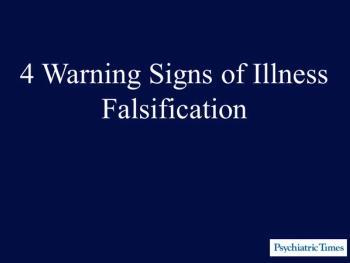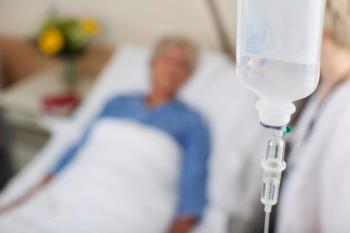
Psychiatric Issues in Emergency Care Settings
- Psychiatric Issues in Emergency Care Settings Vol 6 No 2
- Volume 6
- Issue 2
FACTITIOUS DISORDER
Fliege H, Grimm A, Eckhardt-Henn A, et al. Frequency of ICD-10 factitious disorder: survey of senior hospital consultants and physicians in private practice. Psychosomatics. 2007;48:60-64.
Fliege H, Grimm A, Eckhardt-Henn A, et al. Frequency of ICD-10 factitious disorder: survey of senior hospital consultants and physicians in private practice. Psychosomatics. 2007;48:60-64.
Based on physicians' observations and experience, researchers in Germany estimated that 1.3% of patients have factitious disorder. This estimate was based on data from a physician questionnaire rather than the usual method of collecting data from case studies. The medical specialties of the physicians who participated included internal medicine, surgery, dermatology, and neurology. Dermatologists reported the highest mean prevalence of factitious disorder at 2%, followed by neurologists at 1.3%.
The reported 1-year prevalence of factitious disorder ranged from 0.0001% to 15%. The signs, symptoms, or behaviors that reportedly occur most often with factitious disorder are mechanical manipulation of the skin (57%), open lesions or injuries to the skin (54%), demonstration or statement of pain (49%), complication of wound healing (42%), chemical manipulation of the skin (30%), and demonstration or statement of other alarming symptoms (30%).
Articles in this issue
over 18 years ago
Methadone CAUTIONSover 18 years ago
IMMIGRATION AND MENTAL HEALTHover 18 years ago
Physical Aggression in Dementia Patientsover 18 years ago
Antipsychotics and Weight Gainover 18 years ago
Anxiety Disorders: Aortic Aneurysm in the Differential?Newsletter
Receive trusted psychiatric news, expert analysis, and clinical insights — subscribe today to support your practice and your patients.








